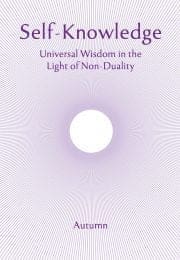The Shvetashvatara Upanishad
The Shvetashvatara Upanishad combines the deepest devotion with the highest knowledge. Human beings are both intellectual and emotional, and both these aspects of our nature need to be trained and transformed. Emotion and intellect, heart and mind, can be united creatively in the same inner quest. When this happens, a great power is awakened within the personality.
Let us consider how this is to be achieved. Provisionally, we may say that the intellect is concerned with how things are, and the emotions with how things affect us. The emotions are most affected by what is visible and tangible, while the intellect understands abstractions and that Reality is different from appearances. Therefore, it is sometimes taught that the way of devotion must be a preliminary stage of refining the emotions and reactions, leading on to the way of knowledge through the intellect of what transcends appearances.
It should be remembered that the intellect is limited to the realm of time-space-causation, and the emotions can rise to unselfish love, so the idea that one is higher than the other, or that they are incompatible, is misleading if taken too far.
Intellect is concerned with knowledge of what exists, and the highest knowledge is to realise that all things are phenomena appearing in absolute Being-Consciousness, Brahman, which is none other than our ultimate Self, Atman. The emotions are concerned with devotion to what affects us most, and the highest devotion is to realise that the absolute Being-Consciousness in which all phenomena appear is none other than our ultimate Self. The way of knowledge means overcoming all that seems to separate us from the Reality in all, and the way of devotion has the same goal. This is the subject of the Shvetashvatara Upanishad.
The Shvetashvatara is believed to have appeared several centuries after the oldest Upanishads, possibly about 200 BCE. No name is mentioned until the end, when we are told that such were the teachings given by the sage, Shvetashvatara. Even this is an epithet rather than a name. It means White Mule, suggesting that the teacher was a sage who rode a white mule, which may symbolise a pure mind. Thus we are encouraged to forget what is superficial, like the name of the teacher, and focus on the essence of what is being taught.
Being a later text, the Shvetashvatara Upanishad draws on vocabulary and ideas from various previously established schools of thought, perhaps in an effort to highlight and synthesise what is best in them all. This contributes to the richness of this Upanishad and has also led to its being interpreted in various ways, which might seem confusing at first. There is a commentary on it attributed to Shri Shankara. Although this commentary may in fact have been written by a follower, Shankara himself certainly quotes the Shvetashvatara, treating it as an authoritative expression of the non-dual teachings. Here we will consider it in the light of, and as a pointer towards, the pure truth of non-duality.
It consists of six short chapters. The first begins with questions:
Those who speak of Brahman ask: What is Brahman, the source? From what are we born? By what do we live? Where do we abide? O knowers of Brahman, what rules our lives, happy or otherwise? (1:1)
This shows that devotion is only one aspect of the Upanishad; these are philosophical questions based on reason about the ultimate origin and controller of the world. Non-duality is a path of enquiry, which begins when such questions begin to press upon us. Verse two considers some provisional answers:
Is it time, nature, necessity, matter, life? These cannot be the source because they depend on the one for whom they have been combined. And the individual self cannot be the source because of joy and suffering. (1:2)
Neither time nor nature nor any of these principles could be the ultimate source of all, because none of them exists independently. And nothing would be the source of its own suffering. The enquiry must go deeper:
By practising the way of meditation, the sages discovered the supreme Being’s own power hidden within the effects. That One alone controls time and the rest. (1.3)
The sages realised that the logical and empirical methods, which are effective in investigating the material world, cannot be applied to the ultimate source of phenomena. So they turned to meditation, which involves withdrawing awareness from objects and focusing on the nature of awareness itself. There, they made the great discovery: they realised that the apparent source of all is their own ultimate Self.
Subscribe or enrol for free guest access to read all of this article and Self-Knowledge online.
Already subscribed or enrolled? Log in:


